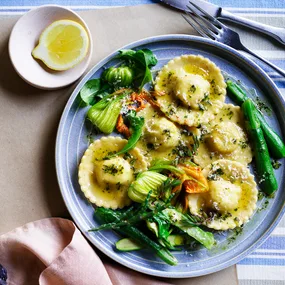This classic dish is both a feature course at festivities and top-notch comfort food made in moments, writes Tony Tan. Whip some up for Chinese New Year. Chop chop.
The story of fried rice is fascinating. The dish appears on the menu in practically every suburban and fancy Chinese restaurant worldwide. This prevalence is linked to the Chinese diaspora in the 19th century – wherever the Chinese landed, a form of fried rice came into being – and fried rice has circled the globe. For instance, it’s commonly known as chao fan (or chow fan) in Cantonese, and in Peru “chaufa”, probably a bastardisation of the Cantonese, is a firm favourite, just as nasi goreng is popular in Malaysia and Indonesia.
The classic, however, is Yangzhou fried rice. Introduced to the world by Cantonese cooks as Yeungchow (the Cantonese pronunciation) fried rice and consisting of just fresh prawns, char siu, spring onions and sometimes peas, it is one of the quintessential dishes by which a Chinese chef is judged.
Its origin is said to be the mercantile city of Yangzhou in Jiangsu province. However, one of Australia’s greatest Chinese chefs, Anthony Lui, of the esteemed Flower Drum in Melbourne, says this dish is not from Yangzhou at all. He compares it to Singapore fried noodles, made with curry powder, a dish that’s not actually from that country but was probably invented by a Chinese restaurateur in Hong Kong. Similarly, chef Lui suggests this definitive rice dish was probably invented by a cook during the Qing Dynasty somewhere in Guangdong province.
Another source says the dish was probably created in a Cantonese restaurant called Ju Chun Yuan in Guangzhou city in the 1800s. At that time, a dish called Yangzhou rice crust with char siu, prawns and sea cucumber was served. Soon it was copied by other restaurants and evolved into the fried rice we know today.
In Tracing the Source of Cantonese Cuisine, the dish is credited to Yi Bingshou (1754-1815), who named it Yangzhou fried rice because he was the magistrate of the city. Today, so famous is this dish that culinary bodies in Yangzhou have made efforts to patent it.
History aside, this cultural touchstone is a part of Chinese festivities. Although it is a simple dish, it heralds the end of a banquet before dessert, particularly at weddings and during Chinese New Year.
Chef Lui says the secret to great fried rice is wok hei, the smoky aroma that’s the hallmark of Chinese cooking. It is the distinguishing feature of a respectable Chinese cook, and the best fried rice should capture that elusive aroma. At Flower Drum, Lui steams the rice with only just enough water, instead of using the absorption method, so the grains are fluffy and separated. By using steamed rice, his fried rice turns out beautifully cooked with that glorious wok aroma.
We don’t always have steamed rice at hand, however, and most Chinese cooks follow some simple principles when making fried rice at home. We use cold leftover cooked rice because it has less moisture than freshly cooked rice. Cold rice also firms up in the refrigerator, making it easier to separate the grains when you fry the rice. Plus, we use good medium- to long-grain rice, varieties that tend to remain firm and hold their individual grains, even when given a vigorous working over in the wok. Short-grain rice tends to stick together, giving a mushy result. I also use Thai jasmine rice, though it is best to reduce the volume of water for cooking it initially so it absorbs less moisture.
I heat my wok first until it’s hot, then add the oil. When a haze forms on the surface of the oil, I proceed quickly with cooking. It goes without saying a well-seasoned wok is essential. While your domestic heat source may not be as fierce as those in Chinese commercial kitchens, it’s possible to achieve that wok hei aroma if your wok is hot.
Ingredients
Method
Main
Note Heat is of vital importance to achieving superior fried rice, so if you find your wok is small, I recommend you cook the fried rice in two batches. Although this recipe is a Chinese classic, you can vary the ingredients as you like – I’ve had a dressed-up version with XO sauce, for example – but just don’t call it Yangzhou fried rice. Barbecue pork, char siu, is available from Chinese barbecue shops.
Notes










